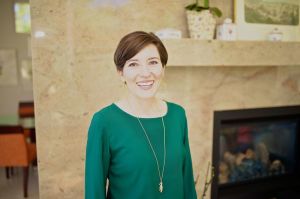Podcast: Download (71.8MB)
Subscribe: RSS
 Neylan McBaine grew up a member of the Church of Jesus Christ of Latter-day Saints (Mormon) in New York City and attended Yale University. She has been published in Newsweek, Dialogue: A Journal of Mormon Thought, Segullah, Meridian Magazine, and the Washington Post to name a few.
Neylan McBaine grew up a member of the Church of Jesus Christ of Latter-day Saints (Mormon) in New York City and attended Yale University. She has been published in Newsweek, Dialogue: A Journal of Mormon Thought, Segullah, Meridian Magazine, and the Washington Post to name a few.
Neylan is the founder and editor-in-chief of The Mormon Women Project, a continuously expanding library of interviews with LDS women found at www.mormonwomen.com.
Neylan is the author of a collection of personal essays — How to Be a Twenty-First Century Pioneer Woman (2008) — as well as Sisters Abroad: Interviews from the Mormon Women Project (2013). She lives with her husband and three young daughters in Utah.
Questions:
Your bio speaks volumes about your passions to support and place a spotlight on Mormon Women. When did your first feel the sparks of this passion?
I actually wanted to start with the cover of the book. Aside from it being warm and fuzzy paper, easy to hold in your hand as you read, the artwork is also quite gripping. I don’t always have much to say about the covers, but I love the painting on the cover of your book. Could you describe it and how the cover actually speaks well to the theme of your book?
This theme of feminism has a wardrobe of interpretations that attempt to clothe a given message. Because there are so many different versions of feminism, could you please take a minute to describe your own interpretation of feminism, and how you frame your self in reference to it?
Your opening sentence is as clear a thesis as I have read however, “This book is predicated on a single belief: that there is much more we can do to see, hear, and include women in the church.” As I read it I wonder about one word in that sentence, the word “much” there is much more we can do to see, hear, and include women in the church. How bold, italicized, and underlined did you want the reader to read into the word “much?”
It is your clear assumption that women are not being heard, and in this same first chapter where you state that a good portion of your book is going to talk about the problem: that some women are feeling neglected, overlooked, and silenced in their church experiences. Is it that these women are feeling neglected and overlooked and silenced by men? By other women? Both?
You address the issue of hurt, of pain, that women are feeling. There are multiple accounts of this happening throughout the church. In a recent interview Terryl and Fiona Givens talked about their new book, The Crucible of Doubt. In that book they talk about the utility of suffering, of trials and tests. They consider these as part of the experience of worshiping deity. Then I read your book and I read about the primary effort to alleviating the hurt. For those that might see these two and feel that both offer some truth they may also seem paradoxical. How then do you define the place, utility, or role of hurt?
You call for greater empathy from general church membership with those who struggle or have hurt. The Savior called for the same thing in his day, and one could argue that seeking for greater charity is the cause of all who wish to be considered disciples of Christ. Discipleship, for men or women, tends to operate on a metaphorical scale where there is a balance of helping others being in ratio to others helping themselves. In reading your book, there is a clear indication that you feel that the church has not done enough to help women or to reach out to embrace women’s voices. What then is that balance as you see it?
We believe in a church of continuing revelation, a living church, one that should not fight flat out the idea of change. But that belief is also tempered by understanding from which changes are to come, and why they come. The first half of your book is meant to lay out the case that there is a need for change. The second part offers some perspectives and examples on how changes can come. How then are we to first acknowledge the need, in a faithful way, without doing so in attacking the system or those who are doing their best to administer the gospel with limited capacities?
In going through part 1 of the book you spend a lot of time talking about the deep need for change on these issues. It can be uncomfortable to sit with that material. While Part 2 of the book is example after of example of how people have enacted changes locally, things that people have done to adopt more equality. This is more a fulfillment of D&C 58:27 where people are being anxiously engaged in a good cause. What are some of those examples
